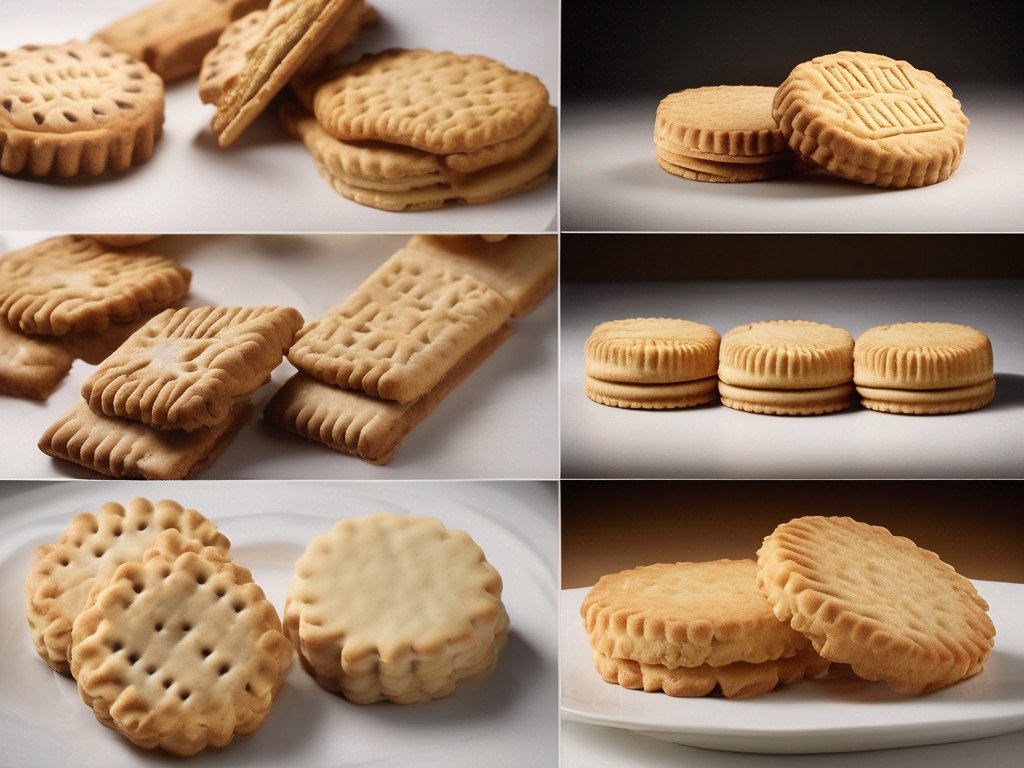
The Ultimate Guide: How to Prevent Biscuits from Going Stale
Get Your Free Food Safety Cheat Sheet
30 most common foods with instant answers. Print it and stick it on your fridge—completely free!
The Ultimate Guide: How to Prevent Biscuits from Going Stale
In the world of snacks, biscuits are a beloved treat that can easily lose their freshness if not stored properly. Whether you enjoy them with a cup of tea or as a quick snack on the go, keeping biscuits fresh and crispy is essential for the best taste experience. In this comprehensive guide, we'll explore the best practices to prevent biscuits from going stale, ensuring that your favorite snack remains delicious for longer. (Biscuit)
Understanding the Culprit: Why Do Biscuits Go Stale?
Before diving into the preventive measures, it's crucial to understand why biscuits go stale in the first place. When exposed to air, biscuits lose moisture, causing them to become dry and crumbly. Additionally, the presence of humidity can accelerate the staleness process by softening the texture of the biscuits. By addressing these factors, you can effectively extend the shelf life of your biscuits.
Factors Contributing to Biscuit Staleness:
- Air Exposure: Oxygen can lead to oxidation, affecting the texture and flavor of biscuits.
- Moisture: High humidity levels can make biscuits lose their crispiness and become soggy.
- Temperature Fluctuations: Extreme temperatures can impact the texture and shelf life of biscuits.
Tips for Preventing Biscuits from Going Stale:
Now that we understand the causes of biscuit staleness, let's explore practical tips to keep your biscuits fresh and tasty for longer.
1. Proper Storage Techniques:
- Store biscuits in an airtight container to minimize air exposure and prevent moisture absorption.
- Consider using resealable plastic bags for individual portions to maintain freshness.
- Keep biscuits away from direct sunlight and heat sources to prevent temperature fluctuations.
2. Optimal Temperature and Humidity Levels:
- Store biscuits in a cool, dry place to maintain their crispiness and flavor.
- Avoid storing biscuits in the refrigerator, as the humidity levels can lead to moisture absorption.
- Aim for a consistent temperature environment to prevent fluctuations that can impact biscuit quality.
3. Use Desiccants or Silica Gel Packs:
- Place desiccants or silica gel packs in the biscuit container to absorb excess moisture and maintain crispiness.
- Ensure the desiccants are food-safe and do not come in direct contact with the biscuits.
4. Vacuum Sealing for Long-Term Storage:
- Consider vacuum sealing your biscuits for extended shelf life, especially for bulk storage.
- Vacuum sealing removes air from the packaging, reducing the risk of oxidation and staleness.
5. Rotate Biscuit Stock Regularly:
- Practice a "first in, first out" approach to ensure that older biscuits are consumed first.
- Regularly check the expiration dates and quality of stored biscuits to prevent staleness.
Conclusion:
By implementing these proactive measures, you can effectively prevent biscuits from going stale and enjoy their fresh taste for longer periods. Remember to store biscuits in airtight containers, maintain optimal temperature and humidity levels, use desiccants or silica gel packs, consider vacuum sealing for long-term storage, and rotate your biscuit stock regularly. With these simple steps, you can savor the deliciousness of biscuits without worrying about staleness creeping in. Learn more about the importance of proper food storage.
Whether you prefer classic butter biscuits or indulgent chocolate chip varieties, keeping them fresh is key to maximizing your snacking pleasure. So, follow these tips and enjoy your biscuits just the way they were meant to be – crispy, flavorful, and utterly irresistible. (Biscuit)
Related Posts
Here are some other articles you might find helpful:
Authoritative Food Safety References
These agencies and university labs inform every tip and health precaution we publish.
USDA FoodKeeper – Cold Storage Guidelines
Official refrigerator, freezer, and pantry timelines maintained by the U.S. Department of Agriculture.
Visit USDA FoodKeeperFDA Produce Safety Rule & Grower Guidance
Field-to-fridge handling practices that prevent contamination of fruits, vegetables, and leafy greens.
Visit FDA Produce SafetyCDC Foodborne Illness Prevention Hub
Surveillance-backed guidance on pathogens, symptoms, and steps to reduce foodborne illness risk.
Visit CDC Food SafetyUC Davis Postharvest Technology Center
University research detailing optimal storage atmospheres for produce after harvest.
Visit UC Davis PostharvestPenn State Extension – Home Food Preservation & Safety
Peer-reviewed extension bulletins on safe canning, chilling, and reheating practices.
Visit Penn State ExtensionGet Your Free Food Safety Cheat Sheet
30 most common foods with instant answers. Print it and stick it on your fridge—completely free! Want more? Upgrade to the complete guide with 70+ foods.
Scan your food directly and get instant safety info using our AI-powered camera feature.